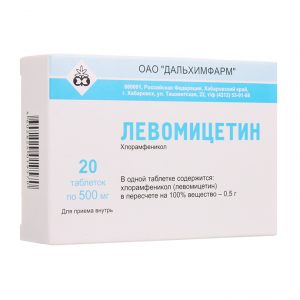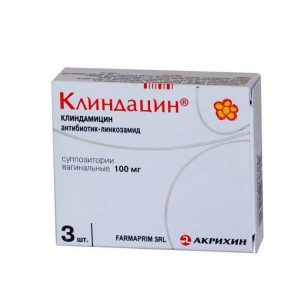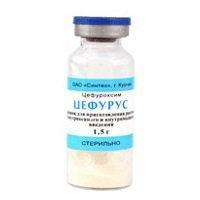Description
Release form
Powder for oral suspension.
packaging 25 g bottle
Pharmacological action
Ecoclave – a combined preparation of amoxicillin and clavulanic acid – a beta-lactamase inhibitor.
Amoxicillin is a semi-synthetic broad-spectrum antibiotic that acts bactericidally, inhibiting the synthesis of cell wall protein of sensitive bacteria at the growth stage.
Clavulanic acid – has a high affinity for bacterial beta-lactamases and forms a stable complex with them. Thus, the biodegradation of amoxicillin by beta-lactamases is prevented, and the bactericidal activity of the antibiotic is maintained. Clavulanic acid inhibits type II-V beta-lactamases according to the Richmond-Sykes classification and is not active against type I beta-lactamases produced by Pseudomonas aeruginosa, Serratia spp., Acinetobacter spp.
Indications
Infectious and inflammatory diseases caused by drug-sensitive pathogens:
lower respiratory tract infections (bronchitis, pneumonia)
infections of the ENT organs (sinusitis, tonsillitis, otitis media)
infections of the urogenital system, pyelitis pyelitis and pyelitis , cystitis, urethritis, bacterial prostatitis, cervicitis, salpingitis, salpingoophoritis, endometritis, bacterial vaginitis, septic abortion, soft chancre, gonorrhea)
infections of the skin and soft tissues (erysipelas, impetigo, secondarily infected dermatoses, abscess, phlegmon, wound infection)
infection of bones and joints (osteomyelitis).
Contraindications
Hypersensitivity (including to cephalosporins and other beta-lactam antibiotics).
Infectious mononucleosis.
Episodes of jaundice or impaired liver function due to a history of amoxicillin / clavulanic acid, phenylketonuria (contains aspartame).
Use during pregnancy and lactation
Pregnancy
The combined preparation of amoxicillin and clavulanic acid during pregnancy is recommended only in cases where the expected benefits of taking it for the mother outweigh the potential risk to the fetus.
Breastfeeding
The drug can be used during breastfeeding. With the exception of the risk of sensitization associated with the penetration into breast milk of trace amounts of the active ingredients of this drug, no other adverse effects were detected in breast-fed infants.
Special instructions
The severity of gastrointestinal symptoms decreases when taking the drug at the beginning of a meal.
During the course of treatment, it is necessary to monitor the state of the function of the blood, liver and kidneys.
Perhaps the development of superinfection due to the selection of resistant forms of the pathogen.
False positive results in urine glucose testing can be detected. In this case, it is recommended to use the glucose oxidase method for determining the concentration of glucose in the urine.
In patients with hypersensitivity to penicillins, cross-allergic reactions with cephalosporin antibiotics are possible.
In the case of suspected infectious mononucleosis, the drug should not be used, since in patients with this disease, amoxicillin can cause a measles-like skin rash, which makes it difficult to diagnose the disease.
Effect on the ability to drive vehicles and other mechanisms that require an increased concentration of attention
Given the likelihood of side effects from the central nervous system, caution should be exercised when driving vehicles and working with moving mechanisms.
Composition of
5 ml of the finished suspension (one dosage spoon) contains:
Active substances: amoxicillin trihydrate – 125 mg (in terms of amoxicillin), potassium clavulanate – 31.25 mg.
Dosage and administration
Intra. Dosing regimen is set individually depending on the patient s body weight, severity and localization of the infection process, and pathogen sensitivity.
Minimum course of antibiotic therapy is 5 days. Treatment should not be continued for longer than 14 days without a review of the clinical situation.The duration of treatment for acute uncomplicated otitis media is 5-7 days, in children under 2 years of age – 7-10 days.
A single dose is set depending on age and body weight (calculation for amoxicillin):
children up to 3 months – 30 mg / kg / day in 2 doses
children 3 months and older:
– low doses (for the treatment of skin infections and soft tissues, as well as chronic tonsillitis) – 20 mg / kg / day in 3 doses
– high doses (for the treatment of otitis media, sinusitis, lower respiratory tract infections, urinary tract infections) – 40 mg / kg / day in 3 doses.
Children weighing 40 kg or more should be prescribed doses as adults.
Suspension may be used in adults with difficulty swallowing.
Recommended dosing regimen for adults: 20 ml of a suspension at a dosage of 125 mg + 31.25 mg / 5 ml or 10 ml of a suspension at a dosage of 250 mg + 62.5 mg / 5 ml 2-3 times a day.
The maximum daily dose of amoxicillin for adults and children over 12 years old is 6 g, for children under 12 years old – 45 mg / kg body weight.
The maximum daily dose of clavulanic acid for adults and children over 12 years old is 600 mg, for children under 12 years old – 10 mg / kg body weight.
Patients with impaired renal function:
Dose adjustment is based on the maximum recommended dose of amoxicillin and creatinine clearance value.
Children
Creatinine clearance greater than 30 ml / min dose adjustment not required
Creatinine clearance 10-30 ml / min – 15 mg / 3.75 mg / kg 2 times a day, maximum dose 500 mg + 125 mg (20 ml suspension in dosage of 125 mg + 31.25 mg / 5 ml or 10 ml of suspension in a dosage of 250 mg + 62.5 mg / 5 ml) 2 times a day
Creatinine clearance less than 10 ml / min – 15 mg / 3.75 mg / kg Once a day maximum daily dose of 500 mg + 125 mg (20 ml of suspension at a dosage of 125 mg + 31.25 mg / 5 ml or 10 ml of suspension at a dosage of 250 mg + 62.5 mg / 5 ml)
Adults
Creatinine clearance greater than 30 ml / min dose adjustment is not required
Creatinine clearance 10-30 ml / min – 500 mg + 125 mg (20 ml of suspension at a dosage of 125 mg + 31.25 mg / 5 ml or 10 ml of suspension at a dosage of 250 mg + 62.5 mg / 5 ml) 2 times a day
Creatinine clearance less than 10 ml / min – 500 mg + 125 mg (20 ml of a suspension at a dosage of 125 mg + 31.25 mg / 5 ml or 10 ml of a suspension at a dosage of 250 mg + 62.5 mg / 5 ml) 1 time per day
Hemodialysis patients:
Dose adjustment is based on the maximum recommended dose of amoxicillin.
Children – 15 mg / 3.75 mg / kg once daily.
One additional dose of 15 mg / 3.75 mg / kg should be taken before a hemodialysis session. To restore the concentration of the active components of the drug in the blood, a second additional dose of 15 mg / 3.75 mg / kg should be taken after a hemodialysis session.
Adults – 500 mg + 125 mg (20 ml of a suspension at a dosage of 125 mg + 31.25 mg / 5 ml or 10 ml of a suspension at a dosage of 250 mg + 62.5 mg / 5 ml) once every 24 hours.
An additional 1 dose during the dialysis session and another dose at the end of the dialysis session (to compensate for the decrease in serum concentrations of amoxicillin and clavulanic acid)
Side effects
The drug is well tolerated. Side effects rarely occur, they are mostly mild and are transient in nature.
From the digestive system: nausea, vomiting, diarrhea, gastritis, stomatitis, glossitis, cholestatic jaundice, hepatitis, liver failure (more often in the elderly, men, with prolonged therapy), colitis (including pseudomembranous), black hairy tongue, darkening of tooth enamel , increased activity of hepatic transaminases, increased bilirubin content and alkaline phosphatase activity.
From the hemopoietic organs: a reversible increase in prothrombin time and bleeding time, thrombocytopenia, thrombocytosis, eosinophilia, leukopenia, agranulocytosis, hemolytic anemia.
From the central nervous system: dizziness, headache, hyperactivity, anxiety, behavior change, convulsions.
Allergic reactions: urticaria, erythematous rashes, multiforme exudative erythema, anaphylactic shock, angioedema, exfoliative dermatitis, malignant exudative erythema (Stevens-Johnson syndrome), allergic vasculitis, syndrome, similar to acute osteoarthritis
From the kidneys and urinary tract: interstitial nephritis, crystalluria, hematuria.
Other: candidiasis, development of superinfection.
Drug interaction
It is not recommended to use the combined preparation of amoxicillin and clavulanic acid simultaneously with probenecid. Probenecid reduces the tubular secretion of amoxicillin, so their combined use can lead to an increase and persistence of the concentration of amoxicillin in serum, while the serum concentration of clavulanic acid does not change.
Diuretics, allopurinol, phenylbutazone, non-steroidal anti-inflammatory drugs and other drugs that block tubular secretion, increase the concentration of amoxicillin (clavulanic acid is excreted mainly by glomerular filtration).
Antacids, glucosamine, laxatives slow down and reduce the absorption of amoxicillin ascorbic acid – increases.
Allopurinol increases the risk of skin rash.
Like other broad-spectrum antibiotics, the combined preparation of amoxicillin and clavulanic acid can reduce the effectiveness of oral contraceptives, and patients should be informed about this.
The literature describes rare cases of increasing international normalized ratio (INR) in patients with the combined use of acenocoumarol or warfarin and amoxicillin. If it is necessary to simultaneously use the combined preparation of amoxicillin and clavulanic acid with indirect anticoagulants, prothrombin time or INR should be carefully monitored when prescribing or discontinuing the drug.
Overdose
Symptoms: impaired gastrointestinal function and water-electrolyte balance.
Treatment: symptomatic. Hemodialysis is effective.
Storage conditions
Keep dry, protected from light at a temperature not exceeding 25 ° C.
Shelf life
2 years.
dosage form
oral suspension
Prescription
Prescription
For children over 3 months old, For children prescribed for a doctor




